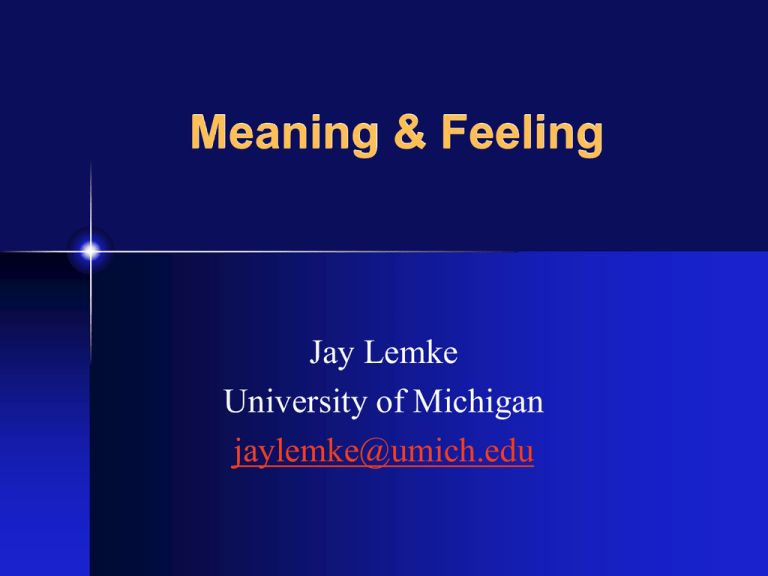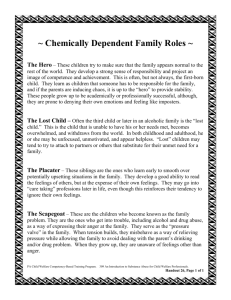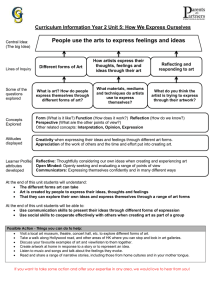Meaning & Feeling - the Berkeley Language Center
advertisement

Meaning & Feeling Jay Lemke University of Michigan jaylemke@umich.edu A feeling for the organism • How do we feel, bodily and emotionally, when we mean with and speak in a particular language/dialect? • What is the role of affectivity in learning to use a language across times, sites, and media? • How do we begin to answer these questions? An Appetizer Feeling & Meaning • • • • • • We feel when we mean We feel when we learn “You feel, you learn” [Alanis] We mean, feel, and learn across time On and across multiple timescales Feeling-and-meaning is situated, distributed, and social Meaning & Feeling • Semiotics as formal analysis of meaning affordances – the possible • Phenomenology in pursuit of the actual – feelings, embodiment, pacing and dynamics • Meaning-making as a felt and feelingful process: feeling and meaning inseparable • 1st person experiencing, 2nd person interactivity, 3rd person analytics Make Love not War ? Learning across Time • • • • • Learning as an aspect of development Learning as transient vs. maintained Learning along life traversals Across settings and timescales The relevance of the past to the present: retrospective view of learning • What keeps learning alive and growing? Affect in Language • Feelings vs. feeling-expressions in a language • Affects, emotions, and appraisals: semantics and language ideology • The Big List • Cultural specificity of emotions • Feelings as relational, interactive, and distributed social phenomena Affect & Language Learning • • • • • How we feel about a language How we feel when speaking a language How we speak our feelings in a language How we learn new feelings in a language How to take feeling into account in designing language learning environments? Affect, Identity, & Learning • Social-affective learning along traversals • Across settings & timescales: issues of continuity and maintenance of learning • Within and across quotidian, mixed, and virtual learning environments • Who we can be when using a language in old and new settings MMO GameWorld Affect & Designs for Learning • Commercial video and computer games as models for affect-inclusive design • Reciprocal responsiveness and the amplified role of feeling in interaction • Immersion and affective realisms • Chronotopes and chronopaths • Traversing realities Research Strategies • Complicating the semantics of affect • Integrating semiotic and phenomenological approaches & data • Mapping chronopaths in realtime video • Analyzing video of virtual worlds • Documenting learning across time and place • Attending to researcher feelings With feeling!






